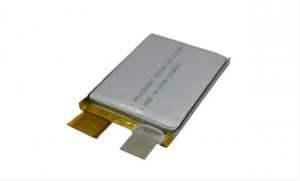With the development of social science and technology, and people’s demand for lighter weight and convenience of all kinds of digital electrical products, digital products have also begun to develop in the direction of lightness and thinness; and for the capacity, volume, weight and electricity of the battery inside the product Indexes such as chemical performance also put forward higher requirements, and traditional liquid lithium batteries can no longer meet new demands. The emergence of polymer lithium-ion batteries (Li-Poly) precisely caters to this demand.
Polymer battery is a third-generation lithium-ion battery developed on the basis of the original steel shell and aluminum shell battery. With its lighter, thinner and higher energy density characteristics, it is favored by lithium battery manufacturers and lithium battery product manufacturers. . The fundamental difference between polymer lithium-ion batteries and liquid lithium-ion batteries lies in the different electrolytes used in the two.
The electrolyte of a polymer lithium battery is solid in appearance, and is called a polymer solid electrolyte. This kind of electrolyte is a kind of polymer material that is in a solid state, but can dissolve and support the electrolyte like a liquid, and can cause ion migration.
8 advantages of polymer lithium batteries
1. Good safety performance
The polymer lithium battery uses aluminum-plastic soft packaging in structure, which is different from the metal shell of the liquid battery. Once a safety hazard occurs, the liquid battery is easy to explode, while the polymer battery will only blow up at best.
2. Thin thickness
Ordinary liquid lithium batteries use the method of customizing the shell first, and then plugging the positive and negative electrodes. The thickness of the battery will be below 3.6mm, there will be a technical bottleneck, while the polymer battery does not have this problem. The thickness can be below 1mm, which is in line with the current situation. Demand direction of digital products.
3. Lightweight
The weight of a polymer battery is 40% lighter than a steel shell lithium battery of the same capacity and 20% lighter than an aluminum shell battery.
4. Large capacity
Polymer batteries have a capacity of 10~15% higher than steel shell batteries of the same size and 5~10% higher than aluminum shell batteries, making them the first choice for portable digital products.
5. Small internal resistance
The internal resistance of polymer batteries is smaller than that of ordinary liquid batteries. At present, the internal resistance of domestic polymer batteries can even be below 35mΩ, which greatly reduces the self-consumption of the battery and prolongs the standby time of the mobile phone, which can completely meet international standards. s level.
6. The shape can be customized
The polymer battery can increase or decrease the thickness of the battery cell according to the needs of customers, and develop new battery cell models, which are cheap and have a short mold opening cycle. Some can even be tailored to the shape of the lithium battery product to make full use of the battery shell space. Increase battery capacity.
7. Good discharge characteristics
Polymer batteries use gel electrolytes, which have stable discharge characteristics and a higher discharge platform than liquid electrolytes.
8. The design of the protection board is simple
Due to the use of polymer materials, the battery core does not fire or explode, and the battery itself has sufficient safety. Therefore, the protection circuit design of the polymer battery can be considered to omit the PTC and fuse, thereby saving battery costs.
Post time: Aug-14-2021





